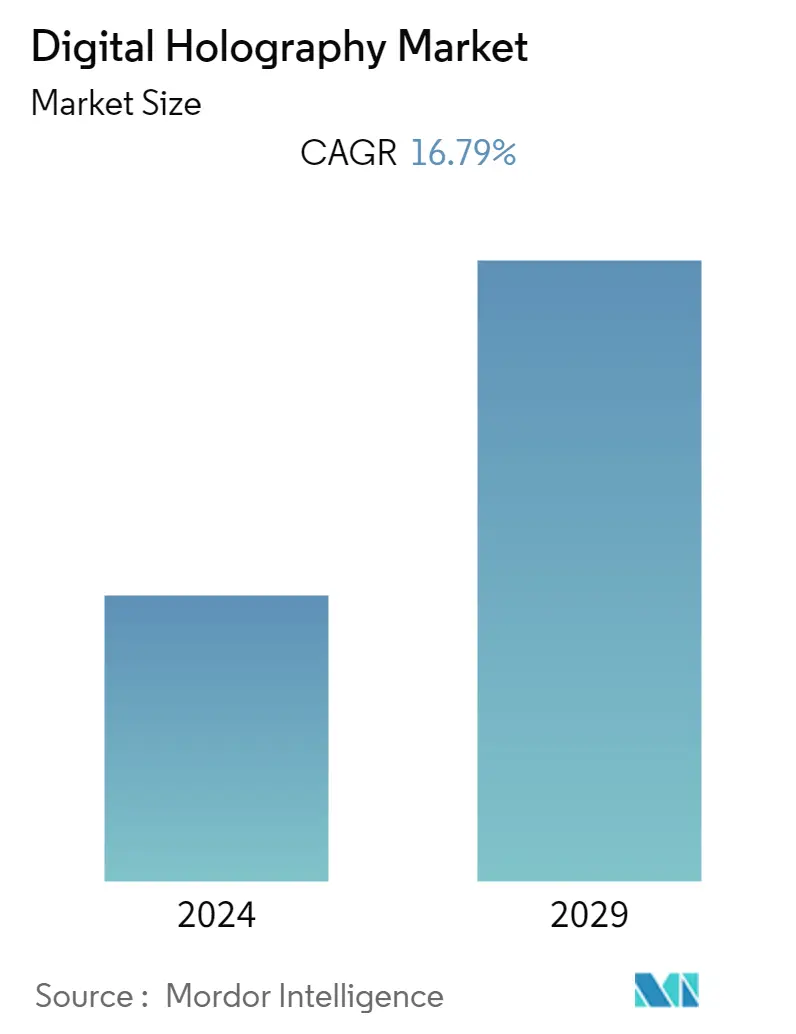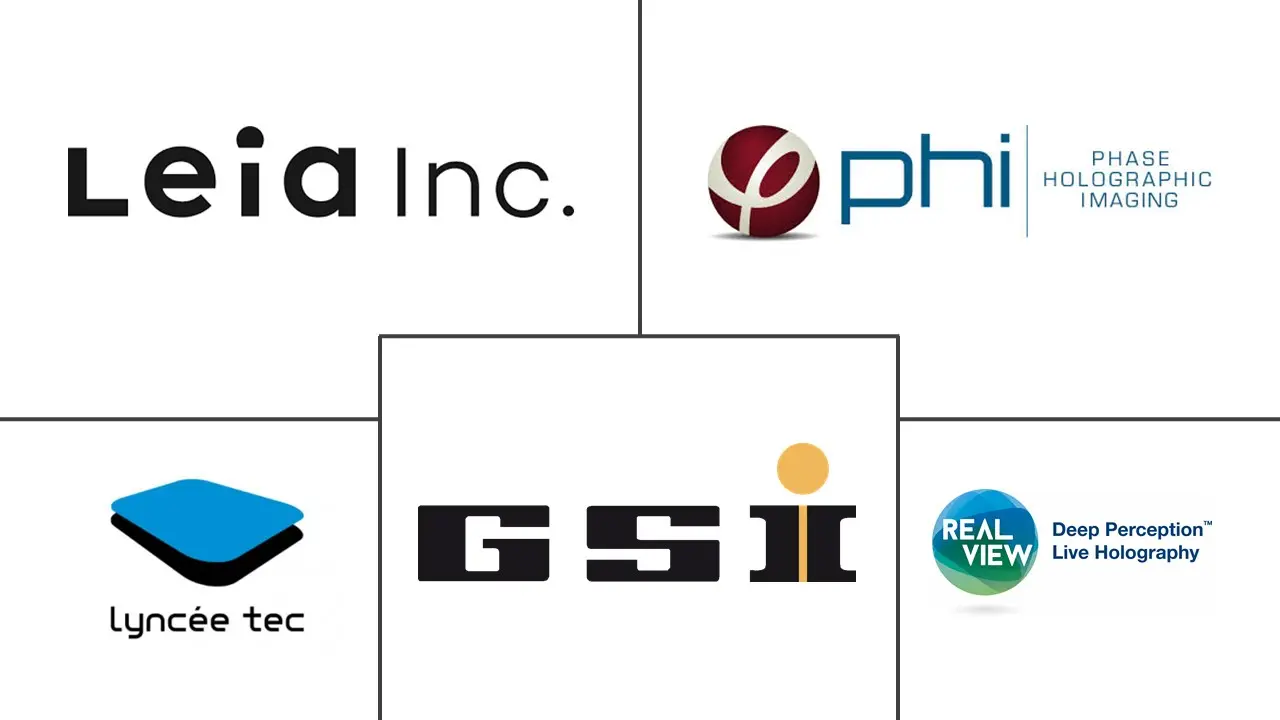Market Size of Digital Holography Industry

| Study Period | 2019 - 2029 |
| Base Year For Estimation | 2023 |
| CAGR | 16.79 % |
| Fastest Growing Market | Asia Pacific |
| Largest Market | North America |
| Market Concentration | Low |
Major Players
*Disclaimer: Major Players sorted in no particular order |
Need a report that reflects how COVID-19 has impacted this market and its growth?
Digital Holography Market Analysis
The Digital Holography Market size is expected to grow from USD 4.92 billion in 2023 to USD 10.69 billion by 2028, at a CAGR of 16.79% during the forecast period (2023-2028).
Two waves are required to produce a hologram and simultaneously record quantitative phase and amplitude images in digital holography. Several application scenarios have demonstrated how this novel idea enables quick 3D imaging. Every industry, including real estate, healthcare, education, and retail, turns to the 3D world to get a more precise and accurate picture of their business models.
- Retailers can incorporate self-service kiosks where customers may engage with a holographic product, bringing an entirely new level of engagement that could ultimately result in greater sales to ensure a frictionless shopping experience. In Pennsylvania, Coen Markets opened two checkout-fee stores; with the aid of the Grabango app, customers may make payments without going through a checkout process.
- Holographic imaging technology boosts biomedical research, healthcare, life sciences, and medical education and training. To better prepare medical students, Cambridge University Hospitals (CHU) and the university's education faculty have introduced mixed reality. Students using Microsoft HoloLens mixed reality headsets can see each other in real-time while engaging with a multi-layered, medically accurate holographic patient thanks to an app that CUH and the university's faculty of education developed in collaboration with tech company GigXR.
- Adopting 3D holography from 2D involves significant expense due to the high cost of objective lenses and specialized digital imaging equipment requirements. Due to the higher computing costs associated with processing holograms, the approach also has a limited range of applications.
- Businesses became aware of the necessity of adopting the newest approaches during COVID-19 due to social estrangement, remote employment, and online education. This increased the need for AR and VR in numerous industries to provide users with a real-life experience. For gaming lovers, VividQ and Dispelix designed a holographic tech that can be used with AR headsets or smart glasses. Gamers can take part in immersive augmented reality experiences where digital content is displayed in the real environment for easy and comfortable interaction.
